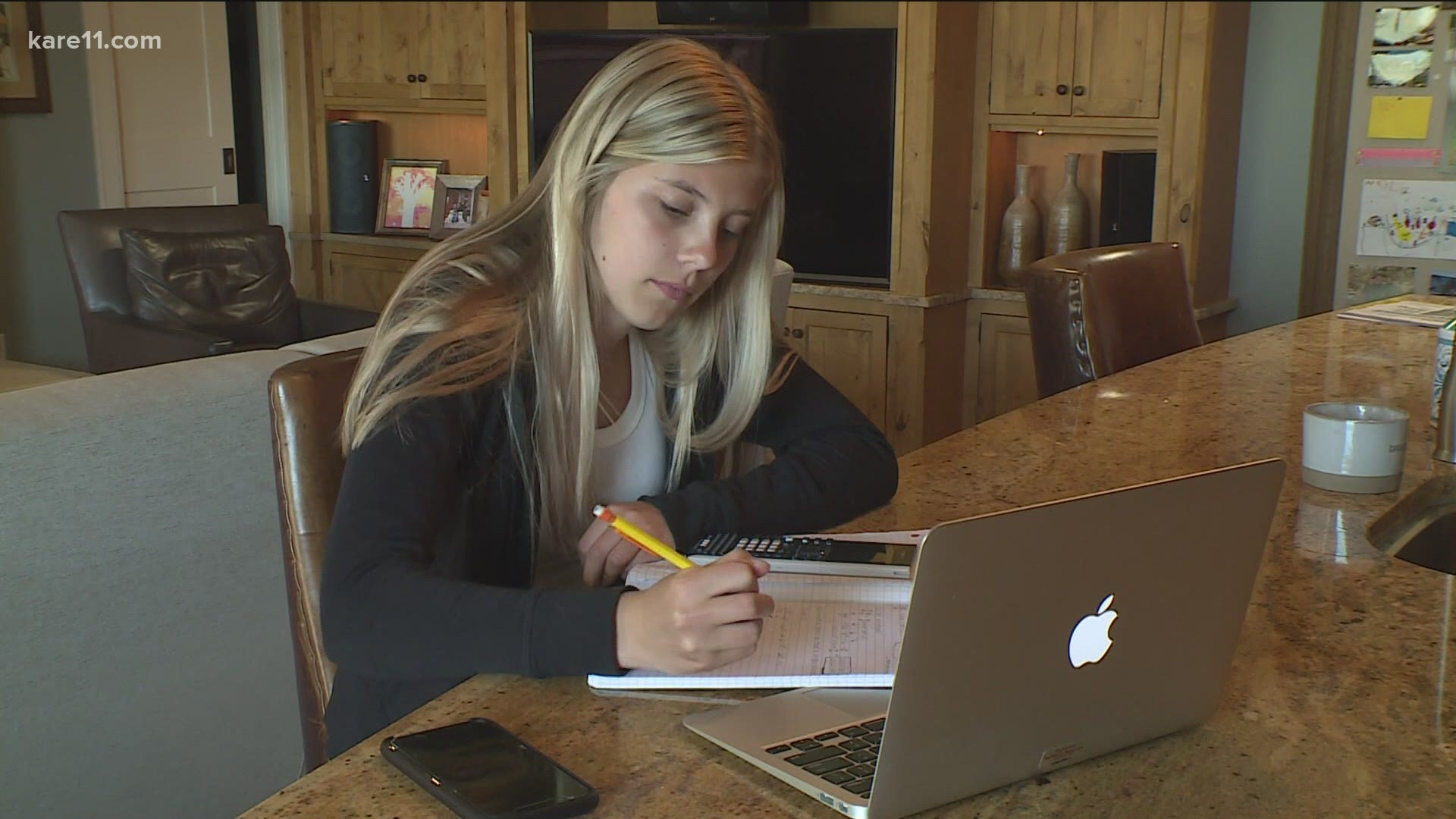BLOOMINGTON, Minn. — Sandra Mortensen, a Bloomington school counselor, uses snacks like cookies and donuts to reach kids in danger of falling through distance learning’s cracks.
In her more than 20 years she says she’s never seen so many kids face so many challenges.
“Some of them are caring for younger siblings. Some of them are maybe in homes that are more crowded - that maybe aren’t able to accommodate five or six kids studying independently,” she explained.
Weekly, Mortensen and others make a list of kids who might need help. Armed with bags of cookies, they knock on doors to make connections.
“We kind of get an overview of what their learning situation is and that’s where we really collaborate with parents too.”
The families rarely turn down treats or help.
Failure rates increased exponentially
KARE 11 surveyed dozens of school districts around the state asking for attendance figures and course failure rates.
Their responses reveal an unsettling trend.
Many districts report the number of failing or no credit grades given in the first quarter of 2020 is double, triple, or more than the number of failing grades in Fall 2019. The difference tended to be most pronounced in districts with more distance learning.
Many districts have decided to grade on a semester basis or don’t have first trimester grades available yet. But among those that did provide data, the numbers were sometimes stark.
At Forest Lake Area High School, in the first quarter of 2019 just 4 percent of courses resulted in an F. This year that number shot up to 14% among hybrid classes and 29% for Distance Learners.
Up North, Bagley schools report 35% of high school grades were F’s this year. That is double the number of failing grades as last fall.
Worthington schools also saw a big increases – failure rates of 34% in high school and 52% in middle school classes.
And in St. Paul 32% of first quarter marks for grades 6-12 were F’s, almost triple last year’s 12%.
Other districts posted smaller course failure rates, but still showed a marked increase over 2019.
“We know that one size doesn’t fit all, and pandemic has given us sort of one size in distance learning,” says Craig Anderson, Executive Director of Teaching and Learning for St. Paul Public Schools.
The district is giving students a chance to complete learning that may have been missed and increase their scores. He is studying the data and believes second quarter numbers will be improved.
“It can be done,” Anderson said.
“100 percent an equity issue”
“I don’t think it’s any shock that we’re seeing students struggling right now. We’re seeing adults struggling right now,” said Tanis Henderson, president of the Minnesota School Counselors Association.
She and other counselors from around Minnesota met virtually with KARE 11 to share what they are seeing in their schools.
They described challenges unique to the pandemic that have caused many students to struggle – especially kids from economically disadvantaged families.
“We’ve lost a lot of kids and it is 100 percent an equity issue. 100 percent,” said Wendy Eidem. “Kids are having more responsibility with their siblings and we’re having a number of our high school kids actually taking jobs during the school day.”
Other students have technology issues, lack access to reliable Wi-Fi or come from homes where there are language barriers. Some have lost their homes.
“Sometimes life has just gotten overwhelming for them,” said Pam Langley, a counselor from Zumbrota.
Others simply stop participating. A unit it the Hennepin County Attorney’s office has received more than 1,200 reports of what’s called “Educational Neglect” – young kids habitually missing school.
Wanting to learn
Despite the dire numbers, educators have hope students can be successful.
The counselors talked about home visits, mentoring programs and online game nights – anything to build relationships and make the students feel connected to school.
“Just thinking creatively how to connect is basically the bottom line,” said Wanda Rangaard from Lake City.
Sandra Mortensen, the Bloomington counselor, says efforts to engage students and families are nearly always met with gratitude.
“All parents want their kids to do well and we’re here and we’re your partners,” she said.
When asked what would solve this problem, Anderson from St. Paul summed up what many educators and superintendents shared with KARE 11. “Wear a mask and social distance,” he said. “We can’t get back to school until we get these numbers where they need to be.”

